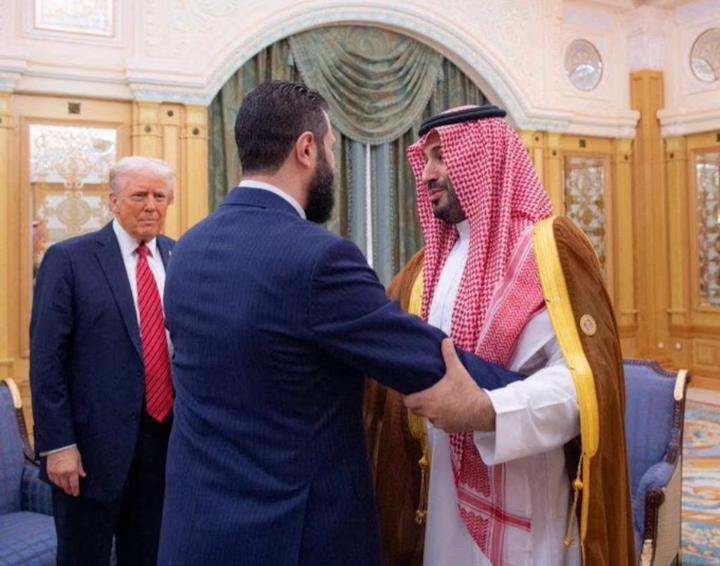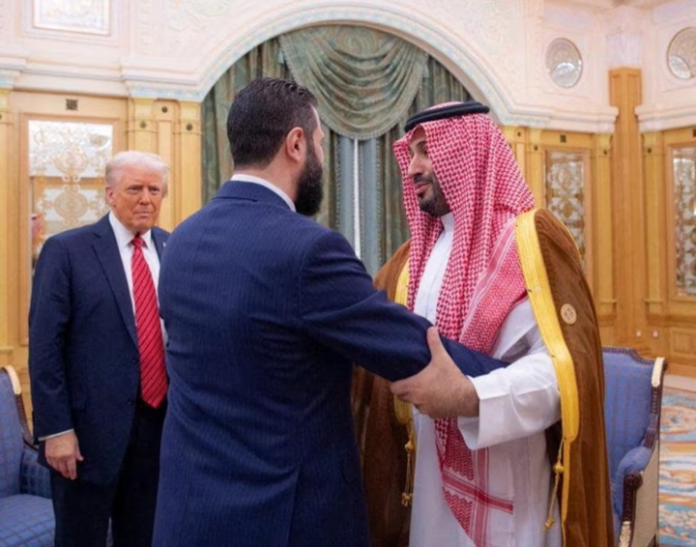In a bold diplomatic move that’s shaking up the geopolitical landscape of the Middle East, U.S. President Donald Trump’s recent four-day Gulf tour has redrawn old alliances and highlighted emerging power shifts. The tour, which included stops in Saudi Arabia, Qatar, and the United Arab Emirates, was not just about optics—it signaled a historic realignment, with Israel notably left out of key conversations.
One of the most striking moments came when Trump, flanked by Saudi Crown Prince Mohammed bin Salman, warmly greeted Syrian President Ahmed al-Sharaa in Riyadh. The photo-op sent shockwaves across the region. For many Israelis, it was deeply unsettling—Sharaa has long been viewed by Tel Aviv as an Islamist aligned with extremist elements.
“Sharaa has potential. He’s a real leader,” Trump declared after the meeting, making it clear that the U.S. was ready to engage pragmatically, rather than ideologically, in the region.
This strategic pivot comes amid growing U.S. frustration with Israeli Prime Minister Benjamin Netanyahu. According to multiple regional and Western sources, Washington is increasingly irritated with Netanyahu’s refusal to agree to a ceasefire in Gaza and his obstruction of U.S. efforts to revive diplomatic talks with Iran.
Netanyahu, once seen as a close ally and the first foreign leader to visit Trump after his return to office, now finds himself isolated. Trump’s administration is sending a strong message: U.S. interests in the Middle East are no longer synonymous with Israeli ambitions.
Behind closed doors, U.S. officials are openly disappointed. Netanyahu hasn’t offered a post-war vision for Gaza, even after 19 months of relentless conflict that has claimed over 52,900 Palestinian lives. The war, triggered by a Hamas attack in 2023, has become a humanitarian crisis that has drawn global condemnation.
Despite claiming continued support for Israel, Washington appears to be bypassing Netanyahu in favor of Sunni powers like Saudi Arabia, which has emerged as a regional kingmaker. Trump signed lucrative arms, tech, and investment deals with Riyadh, signaling a pivot toward economic diplomacy.
While in Qatar, Trump praised the emirate’s role in attempting to resolve the hostage crisis in Gaza—despite its close ties to Hamas. His remarks drew sharp criticism in Jerusalem, where Qatar is viewed as an adversary. Yet, Qatar hosts the largest U.S. military base in the region, making it indispensable to Washington’s strategy.

This new Middle East order is being shaped in Riyadh, Doha, and Abu Dhabi—not Tel Aviv. And although Israel has led regional efforts to contain Iran, its hardline stance is now seen as a roadblock rather than a solution.
Saudi Arabia, emboldened by economic power rather than military might, has become the new center of gravity in regional diplomacy. Trump’s alignment with Gulf monarchies reflects a pragmatic, transactional approach to foreign policy—one where results matter more than historical loyalties.
Publicly, Trump denies any rift with Netanyahu. But his actions speak louder. The message is unmistakable: Israel must adapt to a shifting regional dynamic or risk being sidelined.
With diplomacy taking new shape in the Gulf, and traditional alliances being redefined, one thing is clear—Trump’s Middle East strategy marks a dramatic departure from the past, leaving old allies to reckon with a new reality.



